These changes took effect in Fiscal Year 2016 applications for projects funded in Fiscal Year 2017. Has anything changed?
Evaluating Sex Balance in Animal Model Research
Research animal providers are in a unique position to evaluate changes in use of animals by sex. Taconic Biosciences' shipment data indicates that little has changed since the new NIH policies were announced.To evaluate progress on this issue, we analyzed Taconic shipment data for non-profit institutions in the United States. For the most common research models, there was little to no movement towards equal usage of males and females. These common strains and stocks all display biases towards a particular sex, which has remained unchanged from 2013 through 2018.
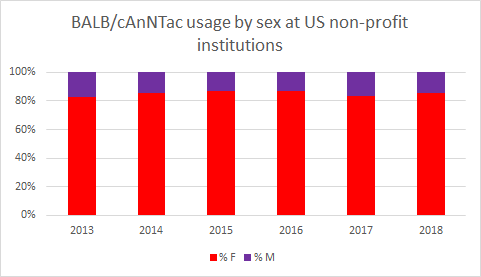
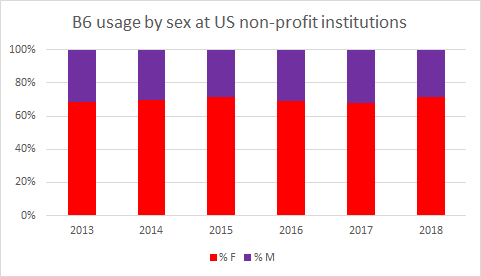
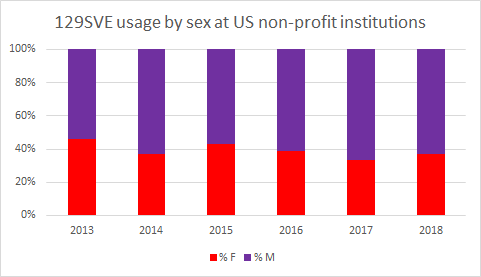
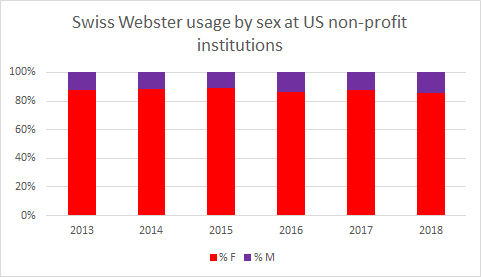
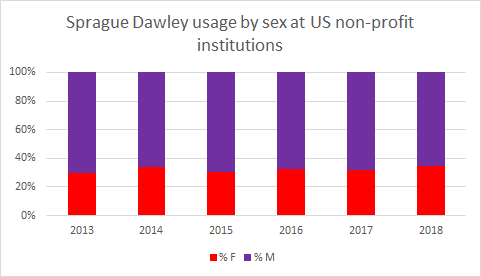
Trends Consistent for Transgenic Animal Models
Standard strains and stocks are used for a very wide variety of research applications and experiment types, which may make more detailed analysis difficult. Yet if we focus on transgenic animal models, most of which have more narrowly defined uses compared to standard inbred strains and outbred stocks, the results are similar.Each model maintains a similar sex bias over time, with some fluctuation seen by year. No strong evidence for movement towards parity of rodent usage by sex is evident in Taconic's shipment data.
For example, usage of the Tau Alzheimer's disease model showed nearly all mice shipped to US non-profit researchers were females, with female mice comprising 94-100% of total volume each year from 2013 through 2018. Drilling down to the individual order level, a few orders clearly source full and equal cohorts of both sexes for a study, but the majority of cohort orders remain for a single sex only.
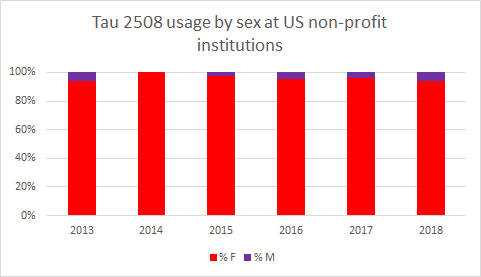
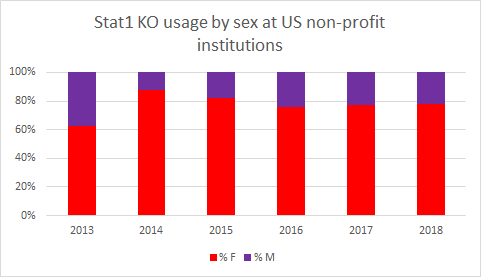
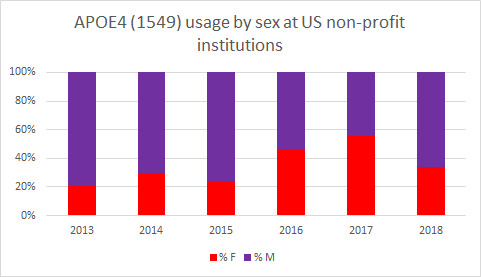
Making Progress to Address Preclinical Sex Bias
It's unlikely that rodent model usage by sex will ever achieve complete parity, as there are logistical considerations that may reasonably drive sex bias. For example, xenograft studies are commonly done in female immunodeficient mice, as they are often less aggressive than males and may be group housed. This benefits animal welfare (social housing is preferred to single housing) while reducing cost.But many experiments can use both sexes and probably should. From an animal welfare perspective, a move towards sex parity in rodent research would reduce the number of surplus animals produced but not put to research use. The nature of breeding is that generally equal numbers of males and females are produced for each line, but sex bias in usage means a large percentage of one sex may not be used experimentally.
Cost is likely another driver. Depending on experimental setup, the need to use both females and males may increase the overall number of animals required. This drives up overall experimental costs, from the initial animal purchase through per diem cage costs. With a challenging funding environment over the past few years, the lack of progress towards sex parity might not be surprising.
With an 8% increase to the NIH budget in the 2018 fiscal year budget, it will be interesting to see if more progress is made towards sex parity in the near future.
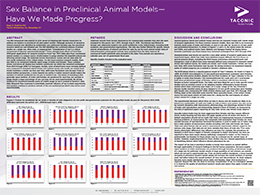 Download the Taconic Biosciences' Poster:
Download the Taconic Biosciences' Poster:Poster presented at 69th AALAS National Meeting, Oct. 28 - Nov. 1, 2018: Taconic Biosciences has analyzed our mouse and rat sales data for non-profit institutions in the United States. For the most common research models — including transgenic models — there was little to no movement towards equal usage of males and females.
















.jpg)

.jpg)
.jpg)
.jpg)
.jpg)





.jpg)


.jpg)
.jpg)




.jpg)




.jpg)

.jpg)




